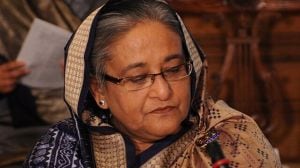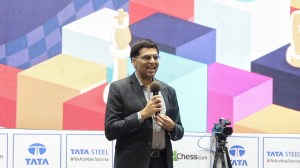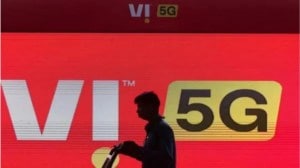Janmejaya Sinha: Make all pay for water, give a laptop to kids from 8-18, measure Indian missions by tourists from those countries
State governments should be encouraged to post one state bureaucrat to target location missions with the task of facilitating tourists come to their state in India, says Janmejaya Sinha.
 "Tourism is a big employment creator. India is doing very poorly in attracting international tourists," says Janmejaya Sinha. (Representational Photo)
"Tourism is a big employment creator. India is doing very poorly in attracting international tourists," says Janmejaya Sinha. (Representational Photo)I have five wishes that I would like to see in the Budget of 2025-26. They are:
1. Fiscal deficit: I would like the gradual consolidation path that the Finance Minister has charted since Covid on fiscal consolidation to continue. It has allowed us to have some weapons in our armory in a very uncertain world. So, achieve 4.9 per cent this year and target 4.5 per cent next year but no more than that.
2. Water: The most urgent and profound crisis that India faces is the shortage of water. India’s current water consumption stands at 1,385 m³ per capita, is a third of the global average and below that of low-income countries.
Water requires a GST-level council to create consensus on water pricing. All sectors including agriculture need to pay for water. In addition, the Centre should create a fund to provide low-cost loans for building and maintaining sewage treatment plants in all cities that are close to water bodies — sea, rivers or lakes; and to municipal corporations to replace all old pipes supplying water in their municipalities.
3. Ease of doing business (EODB): It would be wonderful if we change the metric to capture ease of doing business in India by State.
Construction is well recognised to be one of the highest employment creating businesses in India. Anecdotally I have been told that to construct a 42-story building in Mumbai takes 4 years though it takes less than one year in China. My friends in the business tell me that they provision around two years to just obtain government clearances, and the additional one year is on account of the lower productivity of our manpower.
The right target to check EODB should be time taken to construct and deliver a building by State (from start to occupancy certificate date) and published. It will give a truer picture of EODB by State.
4. Computers for children between 8-18: India is going to supply manpower for the world given age demographics and aging in the rich world including China. Our education outcomes are currently very poor. We must supplement learning efforts and prevent digital apartheid by providing a free computer to all children between 8-18 with pre-loaded learning programs.
There should also be a building in each tehsil or village with 24-hour power and wifi connections, and learning competitions should be introduced as incentives for children.
5. Encouraging tourism: Tourism is a big employment creator. India is doing very poorly in attracting international tourists. Of even the 10 million international tourists that come to India most are non-resident Indians or business travelers. The genuine international tourists are unlikely to be more than 3 million.
We need to act on multiple fronts. Firstly, given how hard it is to get tourists to come to India when here we must get full value from them, so the mantra should be “ek din aur” before we try to get “ek tourist aur.” A tourist should not go see the Taj Mahal and return to Delhi the same day, there should be a night programme too.
The government must address the root causes. Why does Patna have no good hotels?
Land acquisition and land leases for constructing hotels are a nightmare. Getting to important Buddhist sites like Bodh Gaya, Nalanda and Rajgir is hard. It needs to be easier. In fact, coming to India itself should be simplified. We should provide 15-day visa free entry for international tourists from selected countries based on tourism potential and not reciprocity.
We should also consider a tax holiday for private players to encourage them. GST rates for hotels and restaurants need to be moderated. The government should conduct a cost benefit analysis of its GST collections from hotels versus the tourist earnings foregone. In fact, a bureaucrat friend told me he chose to go to Bentota in Sri Lanka, rather than any Indian location because it was cheaper to do so (including flights).
Finally, all Indian missions should also be measured on the number of tourists that have come from that country. Each state should identify its message for international tourists as Kerala had done with its “God’s Own Country” campaign. Bihar might consider religious sites for Buddhist and Jain, Rajasthan its places, other states may focus on historical monuments, temples, medical tourism, beaches, hill resorts, wildlife, plantations, or even educational institutions.
State governments should be encouraged to post one state bureaucrat to target location missions with the task of facilitating tourists come to their state in India.
This is India’s decade but to really make it our own we should remember Benjamin Franklin’s pithy invocation “you may delay but time will not”!
(Views are personal)





- 01
- 02
- 03
- 04
- 05


























